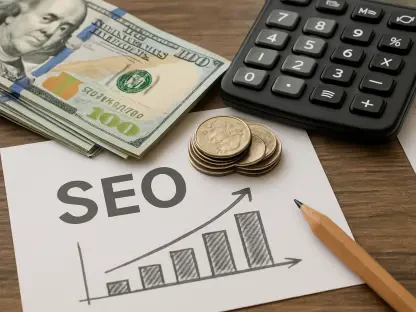The shift toward digital marketing has become more pronounced in recent years as marketers navigate economic challenges such as inflation, fluctuating consumer spending, and supply chain uncertainties. According to Nielsen’s sixth global Annual Marketing Report, which surveyed nearly 2,000 marketers, 72% expect increased ad budgets for 2024, a significant rise from 64% in 2023. This optimistic outlook is reflective of the growing confidence marketers have in digital channels. Approximately two-thirds of media budgets are now allocated to these channels, particularly CTV, search, and retail media. Despite traditional channels still holding some ground, the division of spending between traditional and digital advertising has shifted significantly from a 50:50 balance last year to a more digital-heavy allocation.
The Growing Dominance of Digital Marketing
Nielsen’s report indicates a robust confidence among marketers regarding the effectiveness of digital marketing for ROI. Social media, search, online/mobile video, and online/mobile display are pegged as the most fruitful channels. With an 84% high confidence in ROI measurement, digital marketing seems to offer more tangible and immediate returns compared to traditional methods. However, the focus on performance marketing over brand-building tactics is evident, with 70% of marketers placing a higher priority on performance measures. This leaning towards performance marketing, while statistically effective in the short term, could be detrimental in the long run if not balanced with long-term brand-building initiatives.
Performance marketing prioritizes immediate returns and quantifiable metrics such as clicks, leads, and conversions, offering a more direct way to measure success. Despite its advantages, this could limit long-term ROI and potentially cause brand decay. Marketers could become too dependent on quick wins and neglect the importance of strengthening brand equity, which is essential for sustained market presence. Tina Wilson of Nielsen underscores the necessity of integrated measurement across multiple channels, advising marketers to balance performance and brand-building strategies to optimize both short-term and long-term returns. This highlights a critical gap in holistic evaluation, as only 38% of marketers measure ROI by integrating traditional and digital marketing efforts.
Holistic Evaluation for Sustainable Success
The gap in holistic evaluation, where traditional and digital marketing efforts are not integrated, hampers a full understanding of overall performance. If only 38% of marketers are integrating these efforts to measure ROI, the remaining majority might be missing out on crucial insights that could drive more sustainable strategies. Marketers require a more unified approach to understanding their campaigns’ overall impact. This gap could result in missed opportunities for optimizations that would blend the strengths of both traditional and digital channels.
Integrated measurement can uncover synergies between different channels, which are not evident when assessed in isolation. For instance, a TV campaign might boost online search volumes, or social media engagement could amplify the reach of a print advertisement. To truly grasp the effectiveness of their efforts, marketers should employ integrated measurement techniques, leveraging data analytics to bridge this gap. Effective marketing demands a blend of performance and brand-building strategies, coupled with a unified approach to measuring ROI across media. A more integrated perspective provides a comprehensive understanding of consumer interactions across various touchpoints, ultimately leading to more informed decisions and better resource allocation.
Optimizing for Long-Term Returns
The lack of holistic evaluation, where traditional and digital marketing efforts aren’t integrated, impedes a full understanding of overall performance. With only 38% of marketers integrating these efforts to measure ROI, many are missing crucial insights that could inform more effective strategies. Marketers need a unified approach to understand the complete impact of their campaigns. This gap can lead to missed opportunities for optimization by blending the strengths of both traditional and digital channels.
Integrated measurement can reveal synergies between different channels, which are often missed when viewed separately. For example, a TV campaign might increase online search traffic, or social media activity could boost a print advertisement’s reach. To truly measure their effectiveness, marketers should use integrated measurement techniques and data analytics to bridge this gap. Effective marketing requires a mix of performance and brand-building strategies along with a unified approach to measuring ROI across all media. An integrated perspective provides a comprehensive understanding of consumer interactions across various touchpoints, leading to more informed decisions and better resource allocation.









